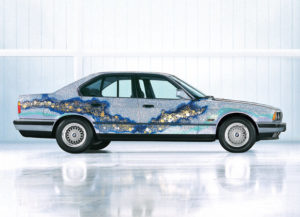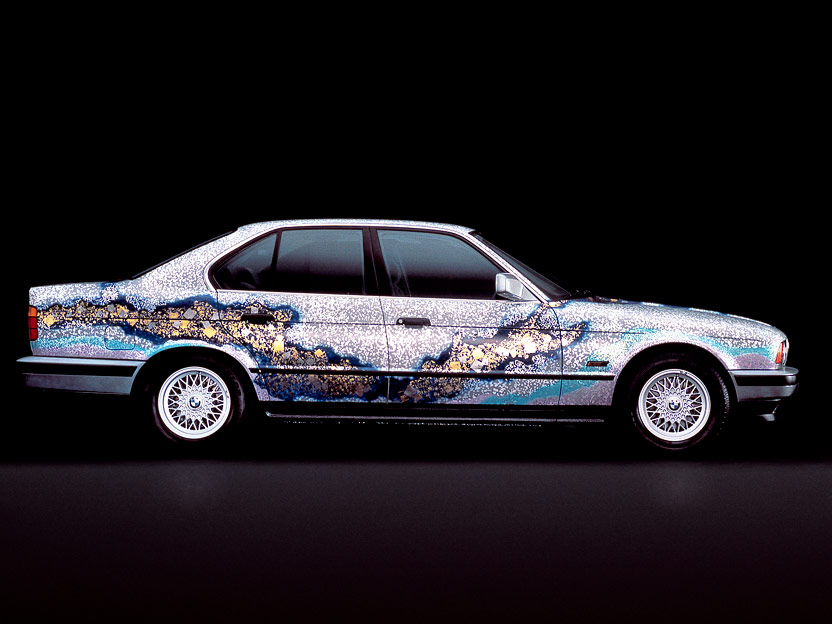1990 BMW 535i
The Japanese artist, Matazo Kayama, was presented with a six cylinder in-line engine, 211 bhp BMW 535i to serve as a fresh canvas for his creation. He based his Art Car design on a contract piece done for Tokyo National Museum of Arts. However, by using airbrush techniques he was able to produce a completely new interpretation of the original theme — “Snow, Moon and Cherry Blossoms.”
Kayama used typical Japanese techniques such as Kirigane (metalcut) and Arare (foil printing). Having completed the Art Car the artist had this to say: “I only became completely aware of the clarity in the lineal design of the BMW after having seen the car in its new coloured robes.”
Gallery
Click any image below for larger view





Matazo Kayama | Japan
Born in Kyoto in 1927, Matazo Kayama studied painting and traditional Japanese arts before exhibiting his works for the first time in 1949. Just one year later he won the Research Society Prize, and in 1951 the New Artist Prize as well as other distinctions. He subsequently experimented with animal motifs for several years before turning to “byobu” illustrations, the artistic decoration of special folding screens, in 1965.
By introducing modernism into the realm of traditional art, Kayama helped to establish a new form of expression in Japan. In 1978 he won first prize in the Japan Fine Arts Grand Prix and completed the work “Snow, Moon and Flowers,” commissioned by the National Museum of Modern Arts.
In 1984 he completed two of his best-known works: a decorated ceiling in Chinese ink entitled “Dragon” and an illustrated 16-section screen. Both now adorn the Koujoni temple in the Minobu Mountains. His most recent works range from jewelry to works in metal and the interior design of Jumbo Jets and luxury steamers, proof of the diversity of Kayama’s creative abilities.
1990 BMW 535i
- 6-cylinder inline engine
- Overhead camshaft
- Displacement: 3,430 cc
- Power output: 211 bhp
- Top speed: 227 km/h
Matazo Kayama and the BMW Art Car
Like many BMW Art Car artists before him, Matazo Kayama saw in “his” BMW a fascinating and challenging scope for design. When he was commissioned by BMW, he immediately had ideas for the design: on the one hand he wanted to express his fascination with BMW technology and on the other evoke vivid associations with modern Japan.
Although Kayama here reverted to his earlier theme “Snow, Moon and Flowers,” he painted it in a totally new way using an airbrush: first of all he sprayed fine blue shadows on parts of the silver BMW exterior to highlight the contrast and to emphasize the elegant quality of the car.
This was followed by classical, meticulous Japanese techniques such as “Krigane” (metal cutting) and “Arare” (foil impression) where small pieces of silver, gold and aluminum foil were cut out and transferred to the bodywork.
“The clean lines of the BMW came clearest to me once the car was fully masked.”
— Matazo Kayama
After finishing the work, the artist confided that a particular difficulty of the artistic design was that he could hardly visualize his work as a whole because of the three-dimensional nature of its surface. He was all the more pleased with the aesthetic effect of his BMW Art Car once it had acquired the status of a work of art in its own right.
Kayama did not intend his Art Car for racing or road travel, but predominantly as an artistic exhibit. This decision meant that he was able to design the car using the effective but delicate Japanese foil impression technique.
